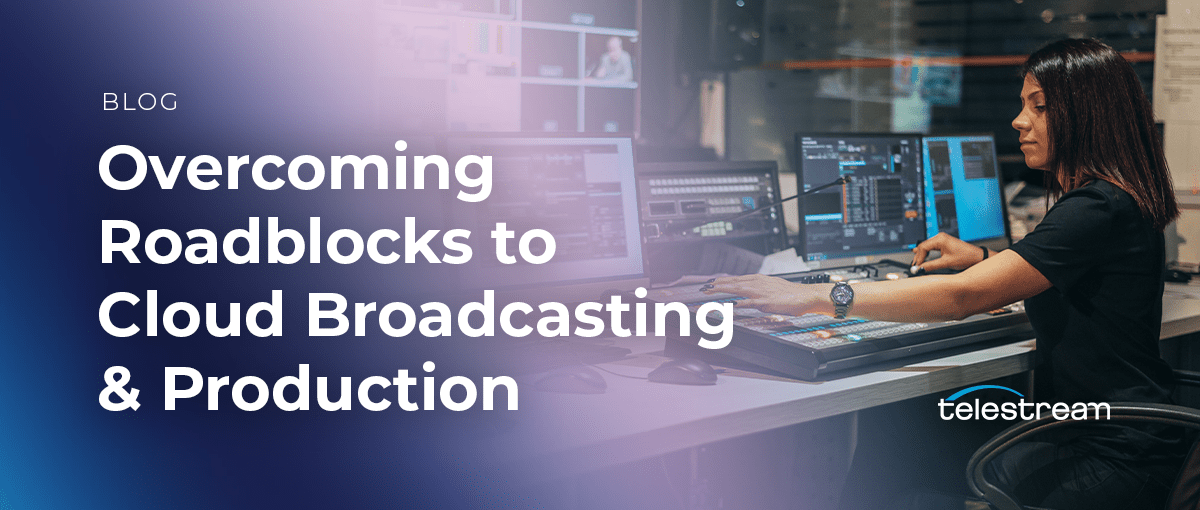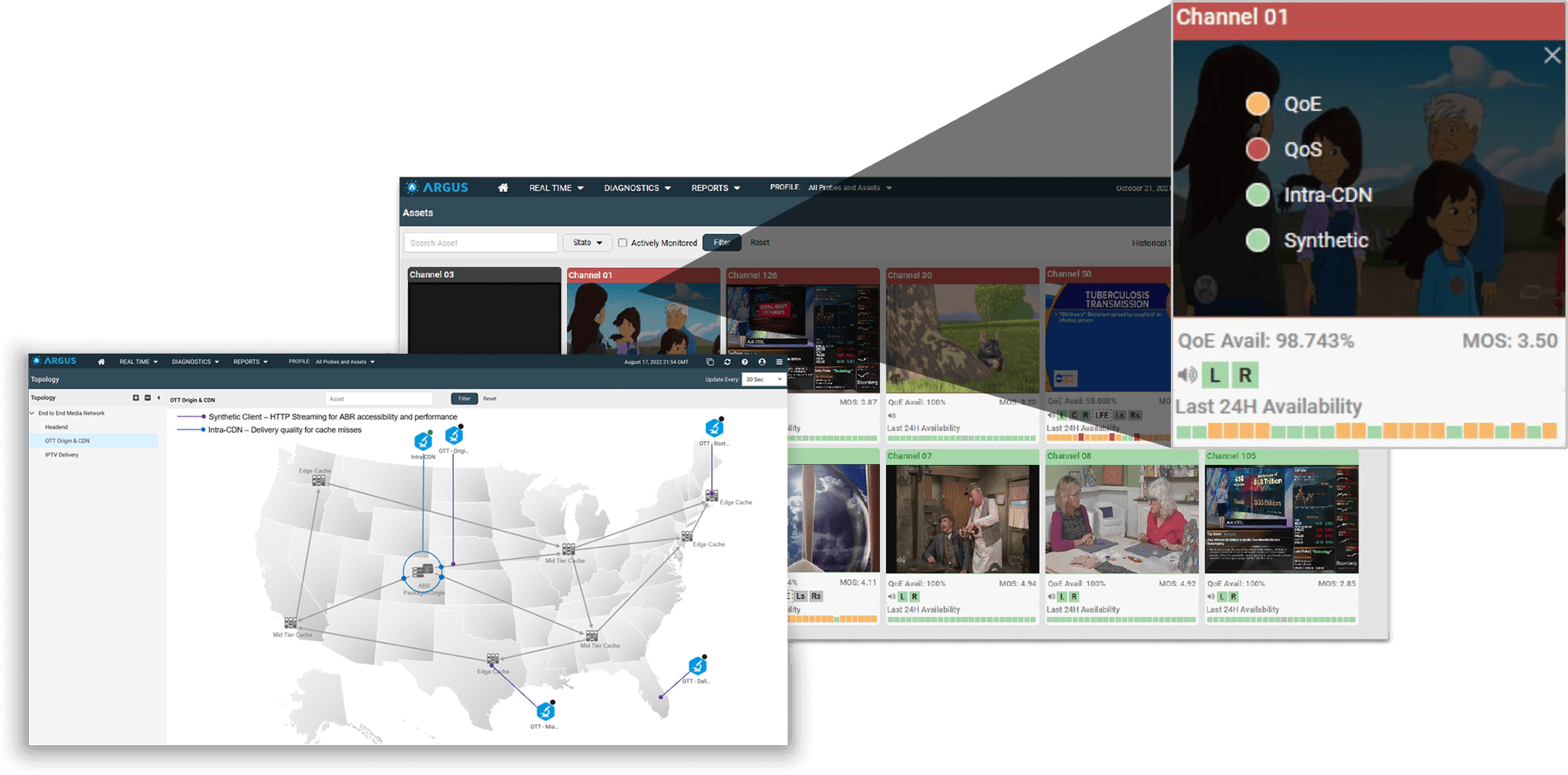Previously, we outlined how cloud broadcasting and production solutions empower broadcast content professionals with scalability, flexibility, and adaptability across the media supply chain. We dispelled some of the common misconceptions, however no new technology is without its fair share of challenges and complexity. This blog post will discuss what to look for in a technology partner that can seamlessly bridge on-prem and cloud environments while providing automated workflows to streamline technical processes.
Top 5 Roadblocks Cloud Broadcasting & Production Solutions Can Help You Overcome
We’ve addressed some of the main concerns broadcast teams have when adopting cloud solutions. In a previous blog, we explored how top broadcasters are leveraging the cloud in their production workflows. Here are some ways the right cloud technology solution can remedy production bottlenecks and enable your media organization to grow and thrive.
Scalability
There comes a point where a broadcaster needs to evaluate how best it can scale to reach new audiences across a growing sea of consumption platforms. Whether viewers are watching content live on TV, on-demand on mobile phones, or some other medium, a content provider that’s looking to deliver premium experiences needs the flexibility to spin up and power down resources at a moment’s notice. For predominantly on-prem production organizations, this can seem like a daunting and expensive effort, but that’s where cloud solutions can step in to make things easy.
Cloud broadcasting solutions are built and maintained by the provider, meaning that broadcasters and content producers don’t have to worry about things like provisioning new resources or configuring workflows. What’s more, these groups can rely less on costly physical infrastructure, making more resources available to help grow content offerings. For example, Lightspeed Live Capture is an on-premises multi-channel media capture and ingest solution but also has a software-only version for use on proprietary servers or virtualized cloud environments. Dave Norman, the Vice President of Sales Engineering for Enterprise Products at Telestream, explored this in a recent interview with TVTech about cloud broadcast production solutions.
Collaboration
If scaling is a priority, then manpower is just as critical as technical resources. Remote and hybrid workforce collaboration has become a top priority over the last few years. If not handled correctly, it can quickly become a troublesome bottleneck for production teams. On-premises systems that do not have any sort of remote collaboration capability are only as useful as the staff who are local and able to access them.
Leveraging cloud-based production technology that integrates with existing on-premises systems can foster far greater productivity. Even if physical infrastructure is critical to a media production organization’s workflow, augmenting those tools with cloud-friendly solutions allows broadcast teams to tap into global talent pools and break free from geographic barriers. These cloud solutions also allow managers to seamlessly scale operations as demand increases or decreases – much like with technical resources. For example, PRISM waveform monitoring hardware devices now support WebRTC connectivity so production teams can monitor, inspect, and ensure media is at the highest possible quality.
Automation
You may be picking up on a common theme: efficiency. Beyond simply providing more technical capacity and access to wider pools of potential collaborators, another key enabler for broadcast organizations is the ability to automate routine, time-intensive tasks. If not configured correctly, however, these workflows could become more of a hindrance. In the on-premises world, where resource capacity is more limited, an inefficient workflow can become a bottleneck for even the most well-oiled broadcast productions.
Cloud broadcasting and production technology can be of tremendous benefit to media organizations. These orchestrated workflows leverage the flexibility and scalability of cloud resources, while integrating seamlessly with any cloud or on-prem production systems. This provides the best possible cost structure, resource management, and workflow efficiency that broadcast media organizations need amidst modern market demands. For example, a cloud-native content management solution like Content Conductor automates metadata tagging for media across private cloud storage servers and on-prem hard disks or tapes. By doing this, Conductor ensures assets are always available at any stage in the broadcast media supply chain. It can also enable seamless transcoding workflows to store these assets in the most cost-effective storage system for their respective stage in the production lifecycle.
Reliability
Will the system work when it’s absolutely necessary? Can it handle the demands of a growing broadcast media organization? Most importantly, does it ensure continued service to customers, with the same top-of-the-line content they’ve come to expect? Reliability is a critical concern for broadcasters looking at cloud technology.
With a solely on-premises ecosystem of production tools, there is likely a greater sense of confidence that these needs will be met. There is a perceived security in an entrenched staff with a wealth of expertise in navigating those systems already. While the needs of today may still be met by yesterday’s tools, broadcasters need to consider long-term solutions, and look at what tomorrow’s media landscape can and will bring.
It’s worth acknowledging that cloud solutions might be unfamiliar territory for production teams that have traditionally used the on-prem systems that have worked perfectly fine all these years. This doesn’t necessarily mean that these cloud broadcasting and production solutions will become roadblocks to reliable service delivery. In fact, many cloud-based solutions (especially the ones that have been designed to support hybrid on-prem ecosystems) have intuitive user interfaces for quick and easy configuration. They also empower greater flexibility for the media production teams to experiment with new ideas, workflows, and processes without over-taxing physical resources. Vantage is a great example of this, with an intuitive workflow designer that allows for deep experimentation without incurring undue risk to the production organization. This simplified, optimized management of the broadcast media supply chain only reinforces a content provider’s ability to reliably serve its customer base with high-quality content.
Intelligence
Visibility and control are critical at every stage in the media supply chain. Making intelligent, informed decisions on the fly based on how a production is developing is crucial. If an issue pops up during production, teams can drill down to the specific system causing the issue and resolve it.
Whether these systems are for content monitoring and analysis, captioning, post production editing, or something else entirely, media production teams can optimize and modernize these operations with cloud broadcasting and production technology. Cloud quality monitoring and data aggregation solutions can provide a “single pane of glass” view into any and all points along the broadcast media supply chain, all the way to final delivery.
ARGUS, Telestream’s award-winning, cloud-optimized, centralized video quality monitoring management platform, enables this consolidated visibility and analytics. Plus, the advent of new artificial intelligence (AI) and machine learning (ML) services empower new automations for caption generation, metadata indexing, content analysis, and more.
Stanza leverages these new AI tools for caption generation, and also boasts an API interface for custom workflow integrations to automation systems. This could fuel enhanced metadata indexing based on the content subject matter, or be fed into final encoding and transcoding workflows before going to viewers.
We hope these last two blogs have helped demystify cloud production technology solutions for broadcasting and media production. The optimized, efficient workflows enabled by these tools can help your organization deliver more reliable, high-quality content to viewers across any device or medium. See how Telestream’s cloud-native and cloud-friendly production solutions for broadcast media preparation can help your organization.






